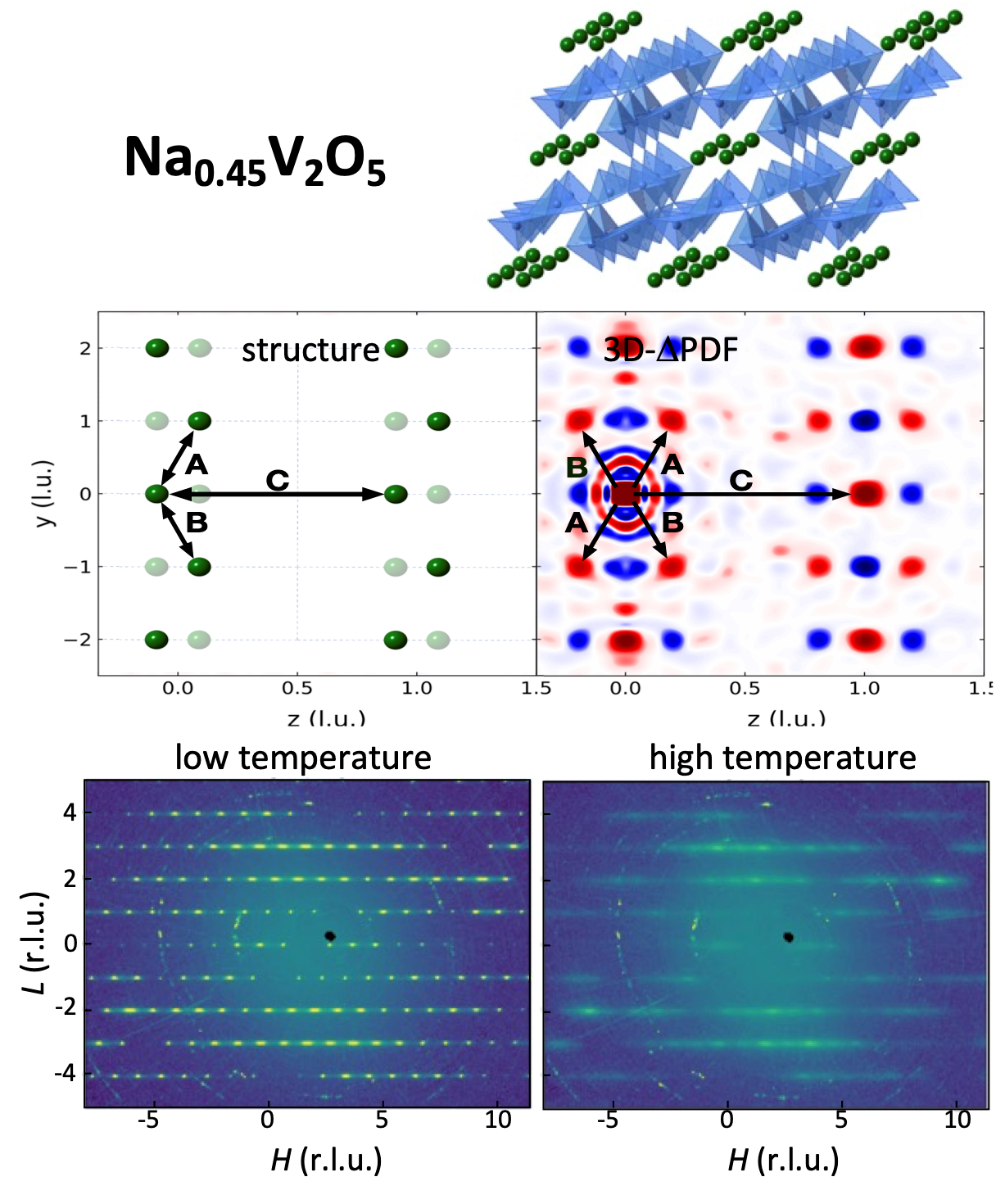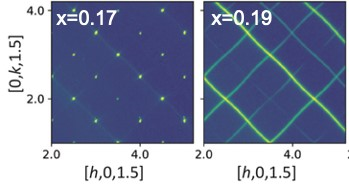Ionic Correlations in Fast Ion Conductors
The behavior of a broad range of energy technologies, including batteries, fuel cells, thermoelectricity devices, and relaxors is intrinsically coupled to ionic disorder. Our objective is to determine how short-range correlations affect fast ion conductivity. A detailed understanding of correlated diffusion is crucial for the rational design of new materials. To gain a deeper understanding, we utilize single-crystal diffuse and quasi-elastic neutron scattering in different fast ion conductors.
Lattice Strain in Strongly Correlated Oxides
Lattice correlations and elastic strain can impact phenomena, such as ferroelectric and quantum paraelectric states, metal-insulator transitions, or charge-ice states. These phenomena have mainly been attributed to strong electron correlations. We are utilizing single-crystal diffuse and inelastic neutron scattering to determine the presence of short-range lattice and nematic correlations and how they relate to materials properties in such systems.

